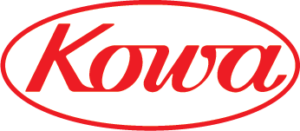Viscopearl is spherical cellulose made from wood pulp. The particle size ranges from 3µm to 4mm. Biodegradable in soil and seawater. 4mm type Viscopearl degrades completely after 96 days in soil. Other properties: heat & chemical resistance, great hydrophilicity and anti-static property. Application Viscopearl can be used as a carrier for aromatic agents or […]
Fast drying polyisocyanate is based on the widely used aliphatic hexamethylene-1,6-diisocyanate (HDI) – enhanced to dry polyurethane faster. These are primarily used for high performance, fast drying polyurethane applications to improve weatherability and UV/chemical resistance.
t-BMA acts as a reactive monomer in order to produce other monomers/substances. t-BMA forms homopolymers and copolymers. tert-Butyl Methacrylate (t-BMA) is also a very useful feedstock for chemical syntheses, because it readily undergoes addition reactions with a wide variety of organic and inorganic compounds.
Our Bio-Based Poly Urethane Dispersion(PUD) is used for Polyurethane coatings, resin and elastomer. It’s liquid at room tempareture and offers low crystallinity, good chemical(suscreen,DEET, oleic acid)/stain resistance.
Ethoxylated Glycerin, with a primary hydroxyl group at the end of a longer alkyl chain, gives excellent scratch resistance due to its high crosslinking ratio, unique flexibility and protection for carbonyl compounds.
TMPTA is a trifunctional monomer used in the manufacture of plastics, adhesives, acrylic glue, anaerobic sealants, and ink. It is useful for its low volatility and fast cure response. It has the property of resistance against weather, chemical, water and abrasion.
TMA is used in the synthesis of plasticisers and for producing epoxy and alkyd resins as well as a variety of other products including dyes, insecticides, polyester resins and pharmaceuticals. It is also widely used in the formulation of paints and plastics. Trimellitic anhydride is used mainly in the synthesis of trimellitate esters. These esters are […]
CHMA forms homopolymers and copolymers. Copolymers of DHMA can be prepared with acrylic acid and its salts, amides and esters, and with methacrylates, acrylonitrile, styrene, butadiene, unsaturated polyesters and drying oils, etc. CHMA is also a very useful feedstock for chemical syntheses, because it readily undergoes addition with a wide variety of organic and inorganic compounds.
AMA is a low viscosity liquid monomer with dual allylic and methacrylic functionalities, offering chemical and heat resistance, adhesion, hardness, excellent second stage cross-linking and low shrinkage. This product is regularly stocked in stateside.
HPA is a hydroxyl functional acrylic monomer used in high performance coating applications. HPA can be used to attach hydroxyl groups to an acrylic polymer backbone to create sites for reaction with a variety of cross-linking agents. Compared with hydroxyalkyl methacrylates, HPA allows faster curing cycles and reduced baking temperatures. It can also be formulated at […]
IBXA is a mono-functional reactive diluent that polymerizes when exposed to sources of free radicals. The bicyclic structure of IBXA produces polymers of increased Tg, while its mono-functionality minimizes cross-linking to provide coatings and inks with good hardness, resiliency, flexibility and impact resistance. IBXA is recommended for coatings requiring flexibility, hardness & thermal resistance, maintaining high […]
STA is non-crosslinkable, low-viscosity monofunctional monomer used as a reactive diluent for radiation and peroxide cure application. Applications include paints, coatings, adhesives, sealants, textile treatment agent, lubricating oil, and internal plasticizer. BRC% is 85% ※BRC % stands for Bio renewable Carbon ratio. = (Bio sourced Carbon)*100 / (Bio soused carbon + Fossil Carbon)
Coated grades aluminum paste are produced by applying special acrylic resin coatings to the design-grade microleafs. This heightens chemical resistance, voltage resistance, adhesion, and other properties. In each grade, the resin types and thickness provide a specific combination of superior properties, functions and performance.
Our Copolymer PCD(Poly carbonate diol) is liquid at room temperature, and offers heat/hydrolysis/chemical/abrasion resistance, good softness and lower crystallinity. The solubility and elasticity are also excellent comparing to standard solid homopolymer PUD. T5652, G4672 and G3452 have 400-900% solubility for measure solvents(Toluene, DMF, Ethyl acetate MEK etc.) This product is recommended for polyurethane dispersions, polyurethane […]
Glycidyl Methacrylate is a unique monomer that allows chemists the ability to put oxirane or epoxy groups into acrylic resins, thereby allowing a variety of further cross-linking or curing reactions. GMA is used in UV coatings, inks, adhesives, photos resists, ion exchange resins, chelating resins, photosensitive resins and dental applications.
Coated grades aluminum paste are produced by applying special acrylic resin coatings to the design-grade microleafs. This heightens chemical resistance, voltage resistance, adhesion, and other properties. In each grade, the resin types and thickness provide a specific combination of superior properties, functions and performance.
HEA is a hydroxy functional acrylic monomer which can be used in a variety of ways to produce resins that are useful in high performance coating applications. Using typical methods for the polymerization of ethylenically unsaturated monomers, HEA can be used to attach hydroxy groups to an acrylic polymer backbone. The pendant hydroxyl groups can then […]
RUVA-93 copolymerizes efficiently with a variety of monomers, such as methacrylic, styrenic, and acrylonitrile monomers, thus providing permanent placement of the benzotrizole in the polymer. The advantages associated with a UV stabilizer bonded to a polymer backbone over the typical “additive” stabilizers include the permanence of the stabilizer in the resin, improved compatibility even in the […]
